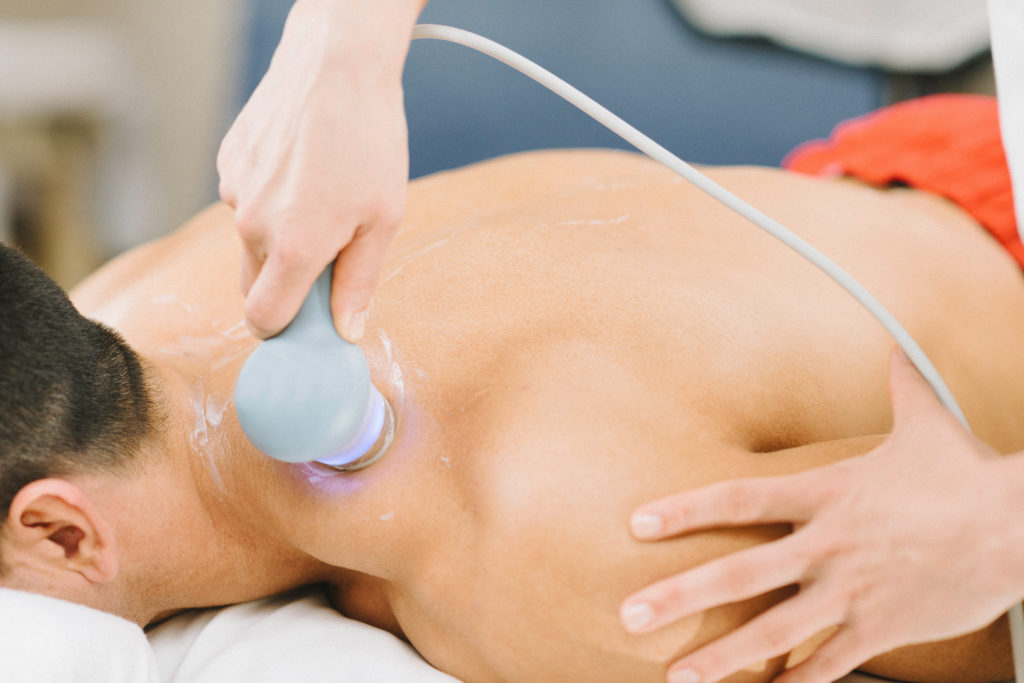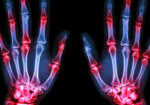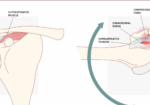Ilter, L., Dilek, B., Batmaz, I., Ulu, M.A., Sariyildiz, M.A., Nas, K., & Cevik, R. (2015). Efficacy of pulsed and continuous therapeutic ultrasound in myofascial pain syndrome: A randomized controlled study. American Journal of Physical Medicine & Rehabilitation, 94(7), 547-554. https://doi.org/10.1097/PHM.0000000000000210
Review by: Megan Prather
The Skinny- Ultrasound hand therapy – ultrasound has been determined as an effective method for use in treatment of myofascial pain syndrome (MPS). Both continuous and pulsed ultrasound have been used with MPS but the two had not previously been compared in a controlled trial. Researchers in this study set out to compare the effects of continuous ultrasound, pulsed ultrasound, and a placebo in MPS to determine best practices for treatment and the use of ultrasound for hand therapy.

In The Weeds- This study was a placebo-controlled, double-blind, randomized controlled trial looking at ultrasound in patients with a diagnosis of MPS with cervicoscapular myofascial pain based on Travell and Simons criteria. Researchers recruited 60 study participants between the ages of 18 and 60 with an active upper trapezius trigger point and pain for at least 1 month who consented to participate. Study participants were divided into one of three groups receiving continuous ultrasound (3 MHz, 1 W/cm2), pulsed ultrasound (3 MHz, 1 W/cm2), or sham ultrasound (machine not on) for 5 minutes 5 days a week for 2 weeks over the painful trigger point. All participants were also instructed in stretching and ROM exercises and received 10 minutes of hot pack treatment. The primary outcome measures for this study were pain at rest and pain with movement. Secondary outcome measures of muscle spasm palpation, psychological state, quality of life, function, and patient satisfaction were also used.
Bringing it Home- Researchers found statistically significant improvement in pain, degree of muscle spasm, neck function, and the Beck Depression Scale quality of life pain subparameter after therapy in all three groups at 6 weeks and 12 weeks after treatment (P<0.05). No significant improvement was found for patient satisfaction or the Beck Depression Scale quality of life social isolation subparameter in any of the groups. Further, in the placebo group no significant improvement was found for the Beck Depression Scale. The group receiving continuous ultrasound showed a statistically significant greater improvement in pain at rest than in either other group (P<0.05). Overall, this study found that continuous ultrasound is better for reducing pain at rest than pulsed ultrasound or placebo in patients with myofascial pain syndrome.

This study was well done and included randomization and blinding of participants into the three groups for clinical comparison. Outcome measures covered a wide range of patient factors and relevant conclusions can be drawn from the data. The smaller participant number and potentially inconsistent exercises done by participants may limit the results. However, these results can positively impact practice and methods used to treat patient pain.
More To Read
Conservative Therapy for OA in the Fingers: A Literature Review
Beasley, J., Ward, L., Knipper-Fisher, K., Hughes, K., Lunsford, D., & Leiras, C. (2018). Conservative therapeutic interventions for osteoarthritic finger joints: A systematic review. Journal of Hand Therapy, 32. 153-164. The Skinny – The article reviews the evidence on the effectiveness of conservative treatment for those who experience osteoarthritis in fingers and in their finger…
Read MoreFunctional Home Exercises for Patients with Wrist Instability
Functional Home Exercises for Patients with Wrist Instability Ever wondered what brushing your teeth, dressing, making a U-turn, and playing sports have in common? They all rely on a stable wrist. Wrist stability is crucial for everyday activities, supporting wrist proprioception, coordination, motor control, stability, and mobility (Wietlisbach, 2019). For patients recovering from a wrist…
Read MoreThe 4 Stages of Simple Wound Care in Hand Therapy
Wound care is messy. It can be intimidating and scary. With so many variations of wounds (for example, white skin around wound) and so many products out there it is hard to know what to use, when to use it, and how to use it. If you go to a wound care conference, you’ll spend most…
Read MoreShoulder Pain: The Effectiveness of Conservative Treatment
Reference: Steuri, R., Sattelmayer, M., Elsig, S., Kolly, C., Tal, A., Taeymans, J., & Hilfiker, R. (2017). Effectiveness of conservative interventions including exercise, manual therapy and medical management in adults with shoulder impingement: a systematic review and meta-analysis of RCTs. British journal of sports medicine, 51(18), 1340–1347. https://doi.org/10.1136/bjsports-2016-096515 By: Tayler Roost The Skinny: This study…
Read MoreSign-up to Get Updates Straight to Your Inbox!
Sign up with us and we will send you regular blog posts on everything hand therapy, notices every time we upload new videos and tutorials, along with handout, protocols, and other useful information.






